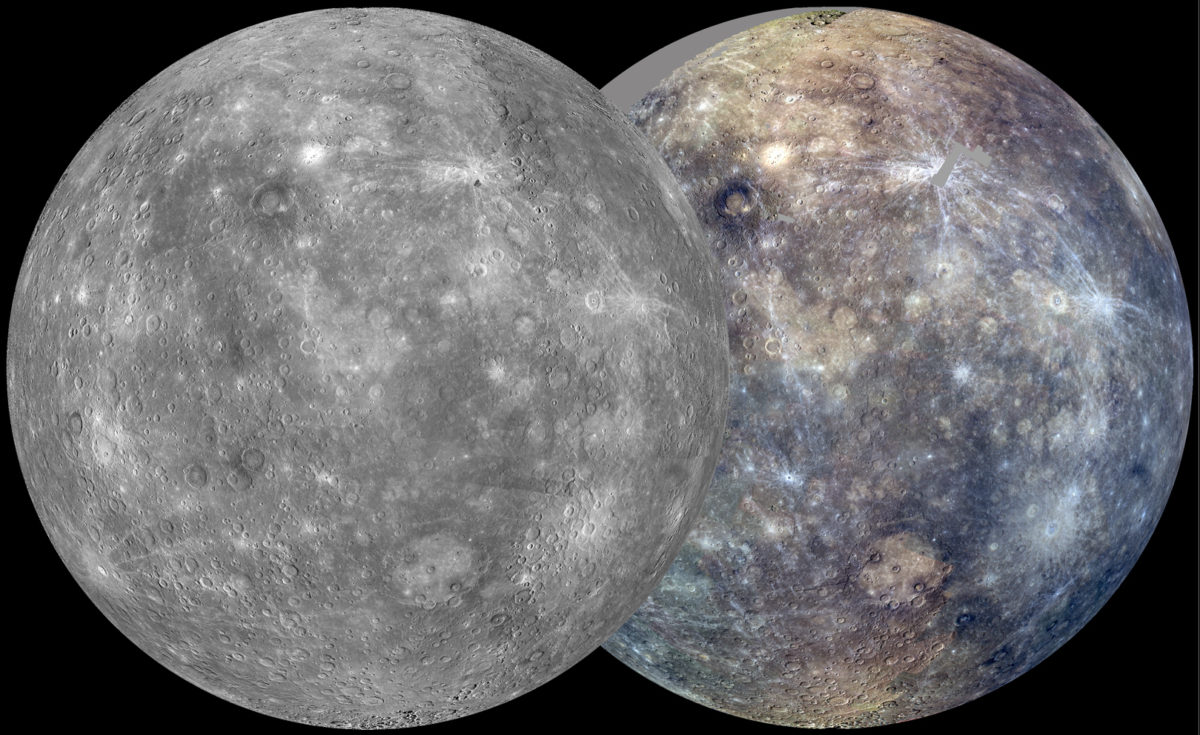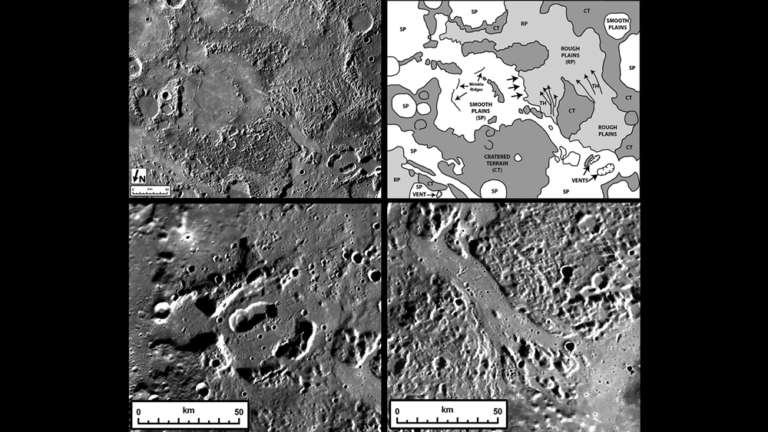Emily Lakdawalla • Oct 05, 2011
Notes from Day 3 of the EPSC/DPS meeting (all about MESSENGER)
Today I largely spent in the MESSENGER sessions. They have a lot of data to talk about, as Sean Solomon summarized:
- 5000 images
- 1300 high-resolution res targeted observations
- 1,000,000 visible-infrared spectra
- 1,500,000 ultraviolet spectra
- 3,500,000 laser pulses producing 6,000,000 distinct measurements
- 150 occultations
- 1.1 Terabytes already in the Planetary Data System
These data were compiled over the first two Mercury years, which, because of Mercury's unique spin-orbit resonance, comprises one Mercury solar day. In fact, MESSENGER reached that one-day-at-Mercury milestone just last week, which therefore also marked the completion of the camera team's first orbital map of Mercury. Usually such things have gaps that need to be filled on later orbits, and this one is no exception, but Brett Denevi told me that the map is really astonishingly complete, 99% complete, so they don't have to plan many gap-fill observations during their second Mercury solar day. Instead they can focus on more high-resolution targeted observations, more observations from lower phase angles (better for color/multispectral imaging), and more off-nadir pictures to optimize stereo coverage.

Here are some of the recent science highlights:
The magnetometer team has found that Mercury's field is axially symmetric but offset to the north of the center of Mercury by about 480 kilometers, or 20% of Mercury's diameter. This means the high-latitude field is 3 times stronger in the north than in the south.
They discovered a vast region of flood volcanism covering Mercury's north pole, which preserves beautiful flow features including braiding and thermal erosion of channels producing remnant teardrop-shaped islands. These deposits are 2 kilometers deep in places.

Maria Zuber showed their topographic map, and WOW. The topography was not shown during today's MESSENGER press briefing. I asked Sean why and he told me that publication of the topography data is being held back pending a better solution for the gravity data, because the topography and gravity are subtly intertwined. That northern volcanic plain also happens to be a topographically low (2 kilometers below mean) region in most (but not all) areas, which complicates the solution of the gravity and topographic shapes of Mercury.
So, without being able to show you a map of either topography or gravity, here's what I copied down from Maria's talk. The topographic map is confined to the northern hemisphere because the laser can only range to 2000 kilometers, and MESSENGER's orbit is extremely elliptical, going out to something like 22,000 kilometers at apoapsis. The dynamic range of Mercury's topography (from highest high to lowest low) is 9.6 kilometers, with a pretty narrow range about the mean. For comparison, the Moon's is 19.9, and Mars' is 30 kilometers -- so she pointed out it's easy to remember Mercury 10, Moon 20, Mars 30. She speculated that the low dynamic range resulted from the shallow depth to Mercury's core and the higher gravitational field than the Moon.
That topographic low area at the pole contains one broad circular topographic rise that is obvious in both topography (low) and gravity (high) data but not at all in images. Similarly yet differently, the Caloris basin is obvious in imagery and as a gravity high but is totally unremarkable in the topographic map -- it's almost completely flattened. There's another spot that's unremarkable in both images and topography but which appears as a prominent gravity high. The north polar region is also smoother than other areas on Mercury, but all are rougher than lunar maria. Floors of old craters within Caloris are tilted toward the rim of Caloris, implying that Caloris was once expressed topographically but that the topography has relaxed.
To briefer summaries of the afternoon talks: Brett Denevi says nowhere on Mercury is as heavily cratered as the lunar highlands. Clark Chapman produced evidence that craters smaller than 10 kilometers in diameter are mostly secondaries, meaning that using crater counting to age date small terrains will not be possible. Peplowski spoke about radioactive elements and said they suggest Mercury's composition is most similar to a partially melted enstatite chondrite. Finally, Sarah Braden used recent craters to examine why Mercury appears darker than the Moon. She inferred that Mercury is both compositionally darker (fresh, unweathered crater rays are darker on Mercury than the Moon) and darkens faster due to space weathering (there are many more rayed craters on Moon than Mercury, indicating a faster degradational process on Mercury.
Support our core enterprises
Your support powers our mission to explore worlds, find life, and defend Earth. You make all the difference when you make a gift. Give today!
Donate

 Explore Worlds
Explore Worlds Find Life
Find Life Defend Earth
Defend Earth

